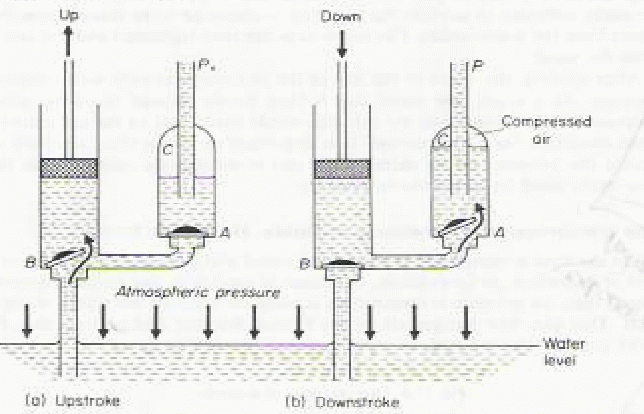A force pump can be used to raise water by a height of more than 10m, the maximum height allowed by atmospheric pressure using a common lift pump. It consists of a pump with a solid plunger and valve B, connected by a pipe to a chamber C through a valve A.

On the upstroke valve A closes and atmospheric pressure pushes water up into the pump through valve B.
On the downstroke valve B closes and the water is force into the chamber C through valve A. The exit pipe P projects into the chamber C so that some air becomes trapped at the top of the chamber. This is compressed and acts as a cushion, preventing a sudden jolt to the pump when the water column in P falls slightly and valve A closes at the beginning of the upstroke.
The maximum height to which water may be raised depends on
-
The force exerted on the plunger during the downstroke.
-
The ability of the pump to withstand the pressure due to thepipe P.
Force pumps were used in manual fire pumps. These consisted of a pair of force pumps connected to a long handle, worked by a team of four men. Both pumps fed alternately in a chamber with a compressed air space as in the diagram above. At the moment of changeover from one pump to another, the compressed air expanded, maintaining a steady flow of water to the hoses.
